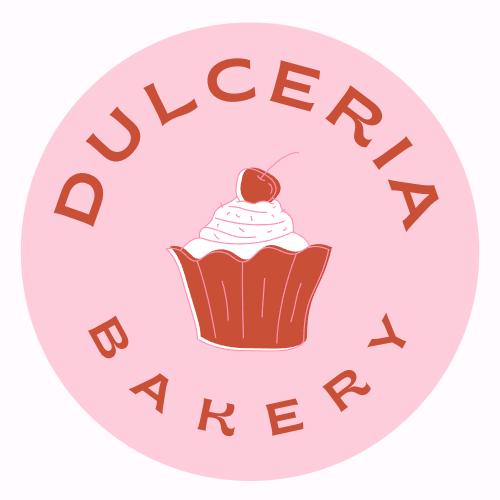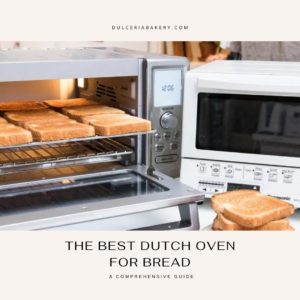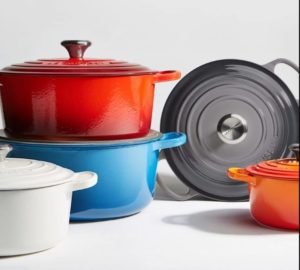Yes, it is perfectly safe to place a Dutch oven inside an oven. However, a few factors must be considered before approving any Dutch oven for use in the oven.
Dutch ovens are now typically compatible with all cooktops, including gas, electric, induction, convection, wood, and even coal used in campfires! If you have purchased a branded Dutch oven, read the included safety recommendations booklet.
If the manufacturer does not provide a manual, record the model number and contact customer service. Use their website, email, or mobile device to contact them.
If your Dutch oven is unbranded, you must check a few boxes before placing it in the oven. Please permit me to elaborate to make the picture clearer for you.
Considerations in Determining the Safety of Dutch Ovens for Oven Use
Four factors determine the compatibility of a Dutch oven with an oven:
- The material from which it is constructed
- The dimensions of the Dutch oven
- The brand of the grip
- The cooking procedure
Dutch Oven Material
Most traditional Dutch ovens were constructed from cast iron. Cast iron is compatible with all traditional and contemporary cooktops and ovens.
Dutch ovens coated with enamel are also oven safe. Before placing your pot in an oven, you must ensure that there are no cracks in it. Enamel particles (glass) will likely enter your food if there are cracks.
The same applies to Dutch ovens with a stone coating. Ensure that there are no cracks or chips within. If Teflon is present in a nonstick coating, it can emit gases at high temperatures.
Any material that emits toxic fumes or reacts by melting at high temperatures (such as plastic) is therefore contraindicated and dangerous for oven cooking.
Dimensions of the Dutch oven
This is a straightforward situation. Ensure that the size of your Dutch oven is compatible with your oven before using it. If it is too large in width, length, or both, you will be unable to close your oven, and all of your preparations will be wasted.
Before purchasing a Dutch oven, you must determine which dimensions are compatible with your oven, induction, gas, and electric burners.
The size should also accommodate your family’s needs. If you have a family of three or more and enjoy making soups and broths, I recommend a Dutch oven with a capacity of seven quarts.
The Handles Need to be Oven Safe as Well
The side handles, and the lid knob must be heat-resistant and nonreactive when exposed to high temperatures. Some sellers use plastic to reduce production costs. If your oven knob or handle is made of plastic, avoid using it for cooking.
Replace a plastic knob’s lid with one made of aluminum foil or steel. If the handles are screwed into place, unscrew them. Instead, use oven mitts to lift the Dutch oven from the sides.
The Dutch oven cannot be used for oven cooking if the handles are integrated. Before cooking in the oven, carefully inspect the handle’s material.
The size of the handle must also be compatible with the oven. Some manufacturers, such as Le Creuset, specify the handle and knob material and their precise temperature resistance range.
Using metal handles in an oven or on any cooktop surface is safe at all temperatures. The only precaution is to use mitts when lifting and placing objects. As wood reacts to high temperatures, handles made of wood should not be used.
The Correct Cooking Technique
When used properly, a Dutch oven can last for many years. Never place a chilled Dutch oven in a preheated oven. This will cause the material of the pot to crack and deteriorate due to thermal shock. Always place the Dutch oven in a cold oven and gradually increase the heat.
Alternatively, the Dutch oven can be heated on the stovetop and transferred to a preheated oven. The Dutch oven and oven should heat up gradually together.
A long simmer is the optimal cooking method for a Dutch oven. They retain heat for an extended period. A Dutch oven is designed to heat evenly from all sides, resulting in excellent heat distribution.
In a conventional oven, Dutch oven functions as a pressure cooker, retaining moisture and pressure to cook food to perfection.
A stew, soup, braise, casseroles, and bread can be cooked in an oven. Remember to coat the bottom of the Dutch oven with enough oil or butter and avoid using metal spoons when using the proper cooking method. Use wooden spoons or silicone. After cleaning, allow the material to dry completely before reusing the Dutch oven.
Safety Checks When Using a Dutch Oven in an Oven
- A Dutch oven gets very hot inside an oven. Keep oven mitts or gloves nearby when removing and replacing the Dutch oven from the oven. Ensure that they fit easily into the handles of the Dutch oven.
- The lid of the Dutch oven should fit snugly so that the created moisture and steam are contained. The Dutch oven lid may occasionally become dislodged during placement due to movement. Maintain vigilance and replace the eyelid in its proper place.
- Remove any ladle that prevents the lid from closing completely.
- If the base or legs of your Dutch oven are enameled, they should not slide on any cooking surface. Reposition and lift the cooking pot with the aid of secure handles.
- Do not heat a Dutch oven at a high temperature. You will obtain a scorched pot and charred food. The flame can be set to medium for a short time but cooking at low temperatures is strongly recommended. Dutch ovens are designed for slow cooking.
- Dutch ovens should never be dry in a hot oven or on a hot cooktop. The heat will cause cracks and an uneven base above the flame if there is no moisture in the Dutch oven.
- A Dutch oven dislikes temperature fluctuations. Although it can be placed in an oven or refrigerator, you should not do so immediately.
- Allow the Dutch oven to cool before placing it in the refrigerator. Similarly, allow the Dutch oven to reach room temperature before using it on a cooking surface or putting it in the oven.
Advantages of Using a Dutch Oven
- Dutch ovens are indispensable in every kitchen. It serves as a slow steamer, pressure cooker, and baking pot!
- Most manufacturers make Dutch ovens compatible with all cooktops, including electric, gas, radiant, halogen, and induction.
- A Dutch oven heats evenly on all sides within a range. The food never adheres, eliminating the need for stirring.
- There is air circulation within the Dutch oven due to the separators.
- Utilize a Dutch oven for stews, sauces, soups, and slow-cooking meats and vegetables. It is also perfect for all other slow-cooking recipes.
- The most recent versions of Dutch ovens are versatile and safe for campfire cooking over wood and coals.
- The cleanup is a breeze. Even though they are dishwasher safe, I would recommend a gentle dishwasher wash and rinse.
- Soak the Dutch oven in baking soda, water, and mild dishwasher detergent to remove stubborn stains. No vigorous scrubbing is necessary. Abrasive scouring can permanently discolor the enamel coating.
- Two handles on the sides of the Dutch oven make placement and removal from the oven or any cooktop simple.
- A lid on top of the Dutch oven pot holds down the liquid and helps it retain heat for an extended period.
FAQs
Simply put, an enameled cast iron Dutch Oven can absolutely be used in your gas or electric oven. In fact, enameled Dutch Ovens are great for baking because their thick walls allow for even and consistent heating from all sides.
Cast iron works on all heat sources. You can use an enameled cast iron Dutch oven on the stovetop (whether it’s electric, gas, or induction), oven, or grill. It even works on coal- or wood-powered ovens.
Enameled cast iron can be used reliably on any heat source, including induction, and with any oven or grill. It has the ability to retain heat efficiently, which allows for use of lower heat settings in stovetop and oven cooking.
Glass Lids are lightweight and can be cleaned in the dishwasher. This is the way to go if you want to watch your food as it cooks without removing the lid and losing heat and moisture. Our glass lids are oven safe up to 400 degrees Fahrenheit.
Dutch ovens are oven-safe, making them ideal for braising meat or baking bread. If you’re baking on high heat, beware: your pot is probably heatproof, but the knob on the lid often has a heat limit below 400º.
Storing food in the refrigerator with your Dutch oven also means having the capacity to marinate food in your Dutch oven overnight.
Most manufacturers will advise that you never heat your oven to more than 260 degrees celsius. That would equate to 500 degrees Fahrenheit or if you are using a gas setting, never go above 6 (European Standards) on those settings. Those are all your maximum temperatures for Dutch ovens when used in conventional ovens
You have a few things that can crack your Dutch oven, but the most common causes include rapid heat changes, heating when empty, or a poor quality brand. The crack may also already have existed on the enamel, which means that you don’t have to worry about it.
You should not cook acidic sauces and foods such as tomatoes, lemons, and other citrus foods, delicate proteins like white flakey fish, and eggs. Also, sticky foods, such as desserts with sugary sauces before carrying out a thorough seasoning of your cast-iron Dutch oven, skillet, or pan.
Conclusion
Most Dutch ovens can be used in the range, depending on the material. The answer can be found in the name ‘Dutch oven.’ Avoid using the Dutch oven if it is coated with a synthetic nonstick material such as Teflon. High temperatures cause the release of gases.
If the handle, lid, or other component is made of plastic, it will also melt when exposed to high temperatures. Any heat-resistant and nonreactive Dutch oven, such as iron, cast iron, enameled cast iron, or stainless steel, can be used at any temperature range.
Use the proper cooking method to prevent scorching, cracking, and chipping. Continually heat the Dutch oven and oven at a low temperature together. Ensure that the dimensions fit your oven and that the quantity is sufficient for your family.
Related Posts
The Best Dutch Oven For Bread: A Comprehensive Guide
Disclaimer: There are affiliate links in this post. At no...
Read MoreBest Dutch Oven For Sourdough Bread
Disclaimer: There are affiliate links in this post. At no...
Read MoreBest Dutch Oven For Camping
Disclaimer: There are affiliate links in this post. At no...
Read MoreLe Creuset Dutch Oven Sale
Disclaimer: There are affiliate links in this post. At no...
Read MoreWhy Trust Us
You will find what you are looking for at dulceriabakery. From classic to luxury brands, you'll find both. We will help you to select appliances that fit your needs, budget and lifestyle. Whether you want to stop by to learn more — or plan to make a major purchase — we’ll treat you like family and assist you every step of the way. Shop with us today to receive friendly and experienced help along the way.




